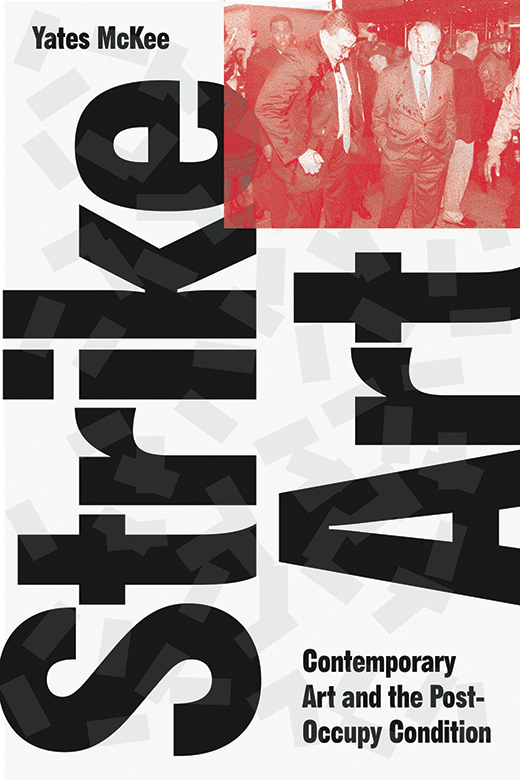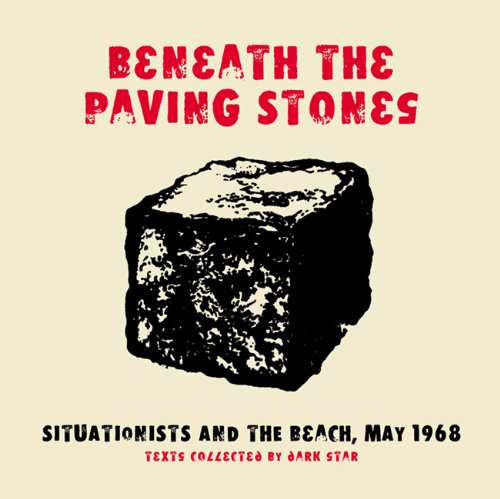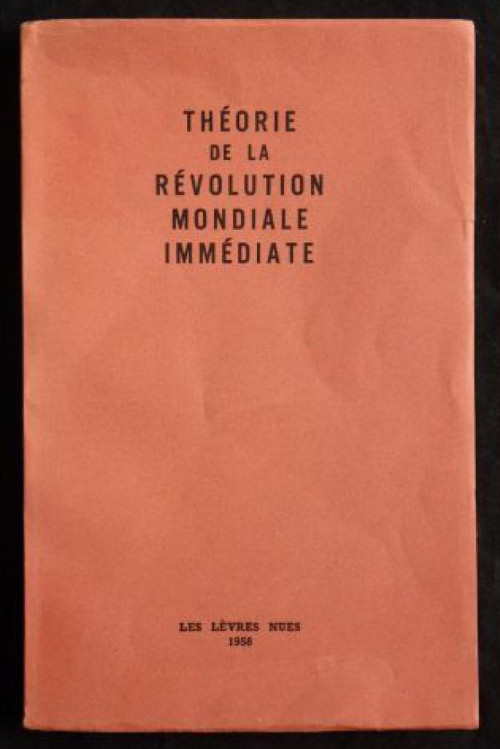Yates McKee: Strike Art: Contemporary Art and the Post-Occupy Condition (2016)
Filed under book | Tags: · aesthetics, anarchism, art, art system, black lives matter, commons, contemporary art, debt, direct action, gentrification, housing, new york, occupy movement, precarity, protest, situationists, social movements, spectacle

“The collision of activism and contemporary art, from the Seattle protests to Occupy and beyond
What is the relation of art to the practice of radical politics today? Strike Art explores this question through the historical lens of Occupy, an event that had artists at its core. Precarious, indebted, and radicalized, artists redirected their creativity from servicing the artworld into an expanded field of organizing in order to construct of a new—if internally fraught—political imaginary set off against the common enemy of the 1%. In the process, they called the bluff of a contemporary art system torn between ideals of radical critique, on the one hand, and an increasing proximity to Wall Street on the other—oftentimes directly targeting major art institutions themselves as sites of action.
Tracking the work of groups including MTL, Not an Alternative, the Illuminator, the Rolling Jubilee, and G.U.L.F, Strike Art shows how Occupy ushered in a new era of artistically-oriented direct action that continues to ramify far beyond the initial act of occupation itself into ongoing struggles surrounding labor, debt, and climate justice, concluding with a consideration of the overlaps between such work and the aesthetic practices of the Black Lives Matter movement.
Art after Occupy, McKee suggests, contains great potentials of imagination and action for a renewed left project that are still only beginning to ripen, at once shaking up and taking flight from the art system as we know it.”
Publisher Verso Books, London and New York, Feb 2016
ISBN 9781784781880, 1784781886
296 pages
Reviews: Marc James Léger (Marx & Philosophy, 2016), Philipp Kleinmichel (Radical Philosophy, 2018), Paloma Checa-Gismero (Field, 2016), John Ayscough (Visual Culture in Britain, 2017), Kristin Gecan (Chicago Review, 2016).
Discussion: Gregory Sholette, a.o. (e-flux supercommunity, 2016).
Book launch
EPUB (6 MB)
Comment (0)Beneath the Paving Stones: Situationists and the Beach, May 1968 (2001)
Filed under book | Tags: · 1968, everyday, life, protest, situationists, social movements, spectacle

“This anthology comprises 3 pamphlets—The Poverty of Student Life; Totality for Kids; and The Decline and Fall of the Spectacular Commodity Economy plus eyewitness accounts of the Paris May ’68 events. Much of the Situationist creed was produced in pamphlet form and these three were crucial in creating the Situationist legend. They provide both an introduction to the ideas of the Situs and a provocatively seductive invitation to a life of freedom & revolt which prefigues many of the themes of today’s mass protestors. Illustrated throughout with photos of the May ’68 events and the graffiti that played such a famous role. The 7″ x 7″ size replicates size of the Parisian cobblestones used by the protestors.”
Collected by Dark Star
Publisher AK Press, Edinburgh and San Francisco / Dark Star, 2001
ISBN 1902593383, 9781902593388
120 pages
Review: Charlie Bertsch (Bad Subjects 2001).
PDF (6 MB)
Comment (0)Marcel Marïen: Théorie de la révolution mondiale immédiate (1958) [French]
Filed under book | Tags: · advertising, capitalism, politics, revolution, spectacle

“Théorie de la revolution mondiale immediate was part of a triple issue of Marïen’s journal Les lèvres nues and ends its first series. It was later published as a stand-alone book. Its avowed purpose was “a sketch of an imaginary program for the overthrow of capitalism in every part of the world it controls, to be completed within a year, with a program applicable at any moment and everywhere at the same time.” (45)
The first half of the text is an analysis of contemporary capitalism under the shadow of nuclear annihilation. These days one might worry more about the Anthropocene, but rhetorically, the problem is similar: how to think a revolution at a time when it appears both absolutely necessary and extremely unlikely.
The first part is a sound analysis of the stage commodification had reached by the late fifties, And bears comparison with the better remembered texts of the time. The very success of the worker’s movement in its reformist form had produced a leisure culture. Workers were becoming petit-bourgeois in outlook. Technical change had raised up a cadre of educated workers. Communist propaganda no longer worked very well, whereas capitalist propaganda was making inroads into the unconscious of the working class.
The second part is more surrealist science fiction than social science. For the project there is to use the spectacle itself for revolutionary ends. The form of revolutionary organization is the advertising agency. It is to be called the Leisure Club. It creates advertising and popular media addressed to every diverse pastime, hobby or consumer preference – all to be worked out using the latest social science techniques. […]
While there are charming features of the book that date it, there are also many ways in which it is strikingly contemporary. As Sven Lütticken has pointed out, it is quite likely that former Tiqqun people borrowed the rhetoric of the Invisible Committee and the Imaginary Party from Mariën. One might also think it an anticipation of Adbusters, or even the strategies of Podemos in Spain, which seems to retain a model of the party of the interior while using contemporary marketing techniques.” (taken from McKenzie Wark’s 2016 essay)
Publisher Les Lèvres nues, 1958
111 pages
via Marcell via Ken
PDF (36 MB)
Comment (0)
